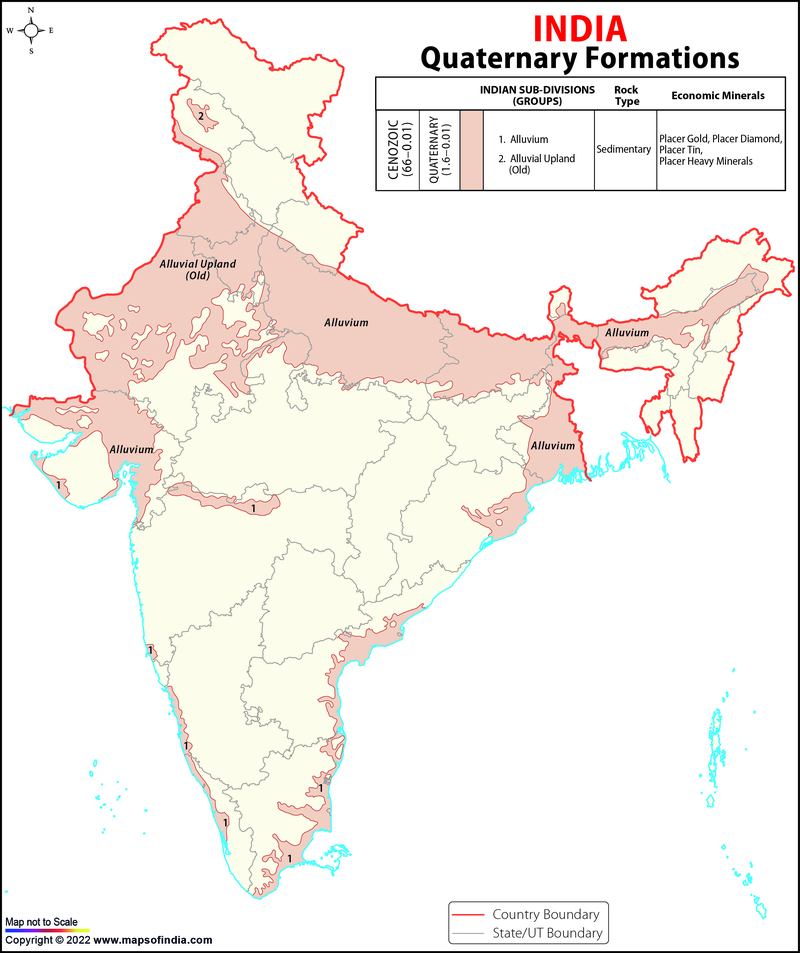The study of the geologic structure of rocks is necessary to know the history and nature of stones because the presence of minerals and the texture of soils depend on the structure of rocks. The oldest and the newest types of rocks are found in the geologic structure of India.
Pleistocene and present-day sediments have been included under the Quaternary group of rocks.
Quaternary System
The formation of the Kashmir valley, Oldest coop (Older Alluvium) in the Sutlej, Narmada valleys, Upper valleys of the Godavari, Krishna rivers, and the Sindh-Gangetic coop were formed in the Pleistocene epoch.
The process of rock formation of the present order continues even today. Coastal sand-stupas and mouths of rivers were formed during this period. Narmada, Tapti, Mahanadi, Godavari, Krishna, Kaveri, and Periyar rivers have collected vast deposits of earthquakes. Many sand-stupas are found in the coastal parts of the Bay of Bengal.
The alluvium found in the Indo-Gangetic plain belongs to the quaternary group era. It got demolished by the rivers and monsoons of the Himalayas. The ancient alluvial deposits include clay, loam, silt, etc., and are distributed into old alluvial and new alluvial sediments. The older alluvium is called Bhangar, which is present in the land above the flood level of rivers. The Khadar or new alluvial is incarcerated to river canals and flood grasslands. This area has some of the most plentiful soils in the country as the rivers continuously enact new siltation every year.
The Quaternary period contains fossils of species with living representatives, including the Satluj-Ganga-Brahmaputra plains and Karewa formations of the Kashmir valley.
Last Updated on: October 15, 2025

